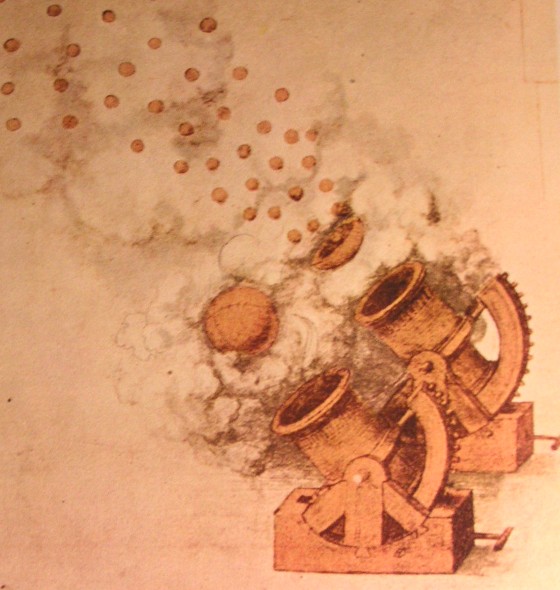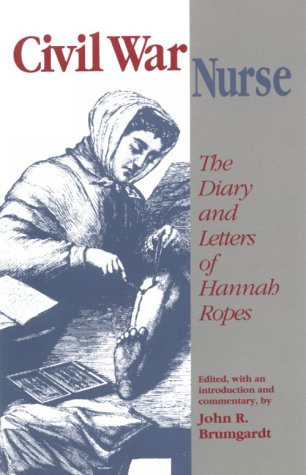Erwin Rommel had been a military man for decades by the time that World War II broke out. Having fought in World War I for Germany, he was a key general for Nazi Germany by the time of World War II. During the war, Rommel was to play a major role in North Africa, and even tried to remove Hitler from power. Samuel Mitcham Jr., the author of a new book on Rommel (Amazon US| Amazon UK), explains.
Erwin Rommel in 1942. Source: Bundesarchiv, Bild 146-1985-013-07 / CC-BY-SA 3.0, available here.
The Desert Fox. The words conjure up an image of a dust-covered, sunburned military genius, making quick and incredibly brilliant decisions against overwhelming forces. He is seen as a Godlike and almost infallible figure, winning victory after astonishing victory over his numerically superior but less astute opponents, yet fighting a war without hate and even with a degree of chivalry. This myth is not entirely accurate, of course, but there is a great deal of truth in it.
EARLY LIFE
Erwin Rommel was born in Heidenheim, Wuerttemberg, in the southwestern region of Imperial Germany known as Swabia, on November 15, 1891. His father, Erwin Rommel, Sr., was the headmaster of a secondary school, and young Rommel grew up in a stable, comfortable middle-class German environment. In many ways, he was a typical Swabian: self-reliant, pragmatic, thrifty, with a strong work ethic and a streak of stubbornness. He was a simple, practical young man and would remain so until the day he died.
Despite the lack of military background in his family, he decided to become a soldier. With his father’s help, he gained an appointment as a Fahnenjunker(officer-cadet) in an infantry regiment in the isolated garrison town of Weingarten. Here, lonely and away from home for the first time, he had an affair with a woman who was a fruit seller. He was shocked when she turned up pregnant. In the class-conscious world of the Second Reich, however, she was not considered officer wife material. He decided to marry her anyway; then his father pointed out that he would have to resign his commission if he did so. It was 1913, and many could see what was to become World War I on the horizon. If he left the army now, Professor Rommel pointed out, everyone would think he was a coward. That settled the issue for Lieutenant Rommel. He broke up with his girlfriend, although he provided financial support for his daughter for the rest of his life.
Erwin Rommel learned his lesson. He married Lucie Mollin, the daughter of a West Prussian landowner, and they remained happily married the rest of his life. He apparently didn’t even think about being unfaithful.
1STLEUTENANT ROMMEL TO CAPTAIN ROMMEL
Rommel joined the army in 1910 and was commissioned in January 1912. His career was not out of the ordinary until World War I broke out. The battlefield changed him from an ordinary, if overly serious second lieutenant into a first-class warrior. As Desmond Young, who fought in the Indian Army against Rommel in Africa and went on to write the bestselling Rommel: The Desert Fox (Amazon US| Amazon UK), would explain, “From the moment that he first came under fire he stood out as the perfect fighting animal: cold, cunning, ruthless, untiring, quick of decision, incredibly brave.” He fought on the Western Front until the fall of 1915, when he was transferred to an elite battalion of mountain shock troops. He served with them in France, Romania, and Italy. In October 1917, during the Battle of Mount Matajur, Rommel (now a 1stlieutenant) took charge of four companies in addition to his own and captured two Italian brigades and several smaller units, totaling 9,000 men and 81 guns. His total strength never exceeded 800 men. A couple of days later, he captured the entire Italian 1stInfantry Division at Longarone: 10,000 men, 18 guns and 200 machine guns. For this feat, he was awarded the Pour le Merite, which was the equivalent of the Congressional Medal of Honor when granted to someone so young. He was promoted to captain shortly after that.
After the Armistice ended World War I in late 1918, Rommel was selected for the Reichsheer, as the peacetime army was called. Here, he was a content family man. He took to marriage enthusiastically. At home, he was good-tempered and an excellent fix-it man. His only flaw was attempting to play the violin—apparently without a great deal of success.
Adolf Hitler came to power in 1933. Rommel’s political convictions and his ambivalent relationship with the Nazis have been the subject of controversy in recent years. Like many Germans, he supported Hitler at first—at least to a degree. He was pleased with Hitler’s successful economic efforts to end the Depression in Germany, as well as his public works programs (including the building of the autobahnen), his renunciation of the odorous Treaty of Versailles, his rebuilding of the military, and his reoccupation of former German areas taken from the Reich after World War I. Only gradually did this change. Sacred vows were broken, and outlandish statements which Rommel and most Germans dismissed as wild rhetoric turned out to be uttered in deadly seriousness. But all that was in the future.
MILITARY CAREER TAKES OFF
Rommel was a lieutenant colonel in 1935, teaching at the War School in Dresden, when he wrote a book based on his lectures and World War I experiences. It became a best seller and Adolf Hitler read it. He determined to meet the author and had Rommel attached to his escort for the Nuremberg Party Rally of 1936. The Fuehrer liked the Swabian and named him commander of the Fuehrer Bodyguard Battalion during the occupations of Czechoslovakia and Memel, and during the invasion of Poland in 1939. He promoted Rommel to major general on August 23, 1939.
In Poland, Rommel saw the blitzkrieg at first hand. Although he had no armored experience, he saw the future lay in the armored branch. After the fall of Warsaw, he asked Hitler for the command of a panzer division, and the dictator gave it to him.
Erwin Rommel had a natural grasp for mobile warfare. As commander of the 7thPanzer Division during the French campaign (1940), he captured 97,468 men and captured or destroyed 458 tanks and armored cars, 277 guns, 64 anti-tank guns, 4,000 to 5,000 trucks, tons of supplies, five French admirals, and about 20 Allied generals. He had approximately 10,000 men and 218 tanks, mostly inferior Czech T-38s.
Rommel was on occupation duty in southwestern France in early 1941 when the Italian 10thArmy in Libya collapsed under British attack. Hitler ordered Rommel to North Africa as commander of the Afrika Korps (15thand 21stPanzer Divisions) to restore the situation. Here he won victory after victory and made himself a renowned military general. In his First Cyrenaican Campaign (1941), Rommel pushed on to the Egyptian frontier and overran all of Libya except Tobruk, smashing the British XIII Corps (the former Western Desert Force) in the process. With less than one full panzer division, he destroyed the British 2ndArmoured Division. Only four of its tanks escaped.
RESILIENT AND RESOURCEFUL AGAINST GREAT ODDS
Rommel was forced to lay siege to Tobruk. It lasted 242 days. The British made three attempts to liberate Tobruk: Operations Brevity, Battleaxe and Crusader. Rommel was severely handicapped, because the British sank 85% of its supplies, and he had only 15% of his needed petroleum and ammunition. Fighting an entire British army with only two divisions, Rommel destroyed 814 British tanks and armored cars, while losing only 167 himself. He had only about 80 tanks left when he was forced to retreat in December 1941.
“If Rommel had an outstanding quality, it was resilience,” British Brigadier Desmond Young wrote later. “He was like one of those weighted toy figures, no sooner was he knocked down than he was on his feet again.” In January 1942, when he received a shipment of 50 new panzers, he assumed the offensive again. This was the Second Cyrenaican Campaign. In five days, he destroyed or captured 299 tanks and armored cars, 147 guns, and 935 prisoners. He lost three tanks and 14 men.
The British dug into the Gazala Line, which they enhanced with a million mines. Rommel outflanked it on May 26 and started a battle that lasted until June 21. He had 333 panzers and 228 mostly useless Italian tanks against 900 British tanks. The British 8thArmy had fewer than 100 “runners” when it retreated into Egypt. Rommel overran Tobruk and took 19,000 prisoners. Hitler was so pleased that he promoted the Desert Fox to field marshal.
After the fall of Tobruk, Rommel invaded Egypt, even though he had only about 55 runners. A heavily reinforced 8thArmy checked him at El Alamein, just 60 miles from the Nile. The British then launched a series of counterattacks against Panzer Army Afrika, aimed primarily at Rommel’s Italian units. Rommel checked them all.
The Desert Fox launched a last-chance offensive at Alam Halfa Ridge on August 30. He had 259 panzers. Montgomery had 713 tanks and absolute command of the air. Rommel lost almost 3,000 men and 49 tanks. Monty lost 1,750 men and 67 tanks. It was the turning point of the Desert War.
The decisive battle in North Africa began on October 23, 1942. When it started, Panzer Army Afrika had 104,000 men (half of them German) against Montgomery’s 195,000. The Germans were outnumbered 4 to 1 in men, 5 to 1 in tanks (excluding Italian tanks), 3 to 1 in anti-tank guns, and 3.6 to 1 in aircraft. Rommel’s forces were dangerously low on fuel, making a battle of maneuver impossible. Rommel had 293 tanks when the battle began. Only a dozen of them survived the battle. The British lost about 500 tanks.
In December 1943, Rommel’s Army Group B assumed command of the 7thArmy, 15thArmy, and Armed Forces Netherlands. They were part of Rundstedt’s OB West (Oberbefehlshaber West), the German Supreme Command in the West. OB West had 58 divisions. Hitler had 151 divisions fighting on the Eastern Front.
DEFEAT, CONSPIRACY, AND SUICIDE
Rommel significantly thickened the defenses of Fortress Europe. When the Allies landed in Normandy in June 1944, Rommel was able to check but not repulse the Great Invasion. Meanwhile, Rommel learned that Hitler and his cronies were committing mass murders in the East. He turned against the Nazis and joined the conspiracy to overthrow Hitler and his regime.
Field Marshal Rommel was seriously wounded by an Allied fighter-bomber on July 17. Three days later, the conspirators detonated a bomb under Hitler’s table, severely injuring him. After the coup attempt failed, the Gestapo launched a full-scale investigation. They discovered Rommel’s part in the plot. On October 14, 1944, a pair of Nazi generals offered Rommel a choice: stand trial in front of the People’s Court or commit suicide. Under the doctrine of Sippenhaft—collective family responsibility—the Nazis would then arrest his family, and they would end up in a concentration camp, if they were lucky. However, if the field marshal committed suicide, they said, his family would be spared, and would even be allowed to draw his pension. Rommel declared that he would be dead in 15 minutes. He took a cyanide pill provided by the Nazis and was dead within half an hour. Thus ended the life of the military general.
On this occasion, the Nazis actually kept their word. They did not harm Rommel’s family. Lucie Mollin Rommel died of natural causes in 1971. Their only child, Manfred, died in 2013. Gertrude, Rommel’s illegitimate daughter, passed away in 2000.
Let us know what you think about the article below.
Dr. Samuel W. Mitcham Jr. is the author of newly-released Desert Fox: The Storied Military Career of Erwin Rommel (Regnery History; March 12, 2019 - Amazon US| Amazon UK), and more than forty other history books. He has appeared on the History Channel and the BBC, been a visiting professor at West Point, and served as an Army helicopter pilot during the Vietnam War.
The Wall Street Journal praised his previous title, Vicksburg: The Bloody Siege that Turned the Tide of the Civil War (Regnery History; June 4, 2018 – Amazon US| Amazon UK), as a work that “thoroughly recounts the series of battles leading to the gates of Vicksburg and illuminates some underappreciated aspects of the war.”
He lives with his family in Monroe, Louisiana, where he is now devoted to writing military history books.



















